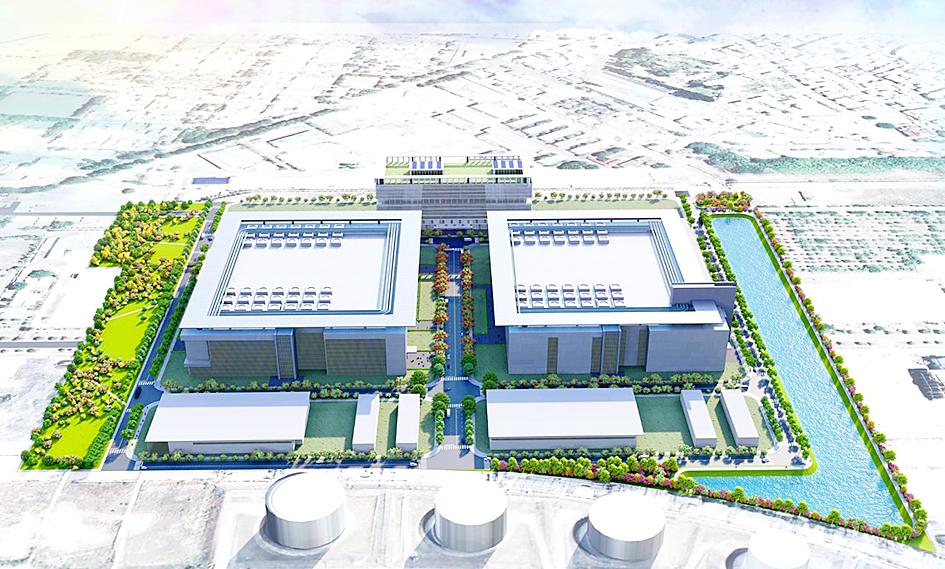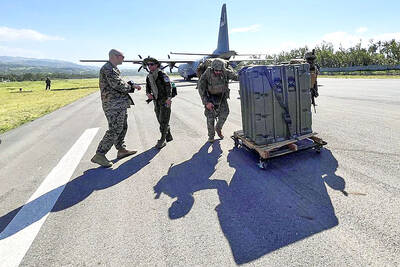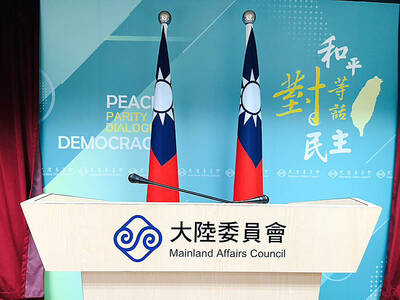The construction of Taiwan Semiconductor Manufacturing Co’s (TSMC) new wafer plant in Kaohsiung is to begin next month, the Kaohsiung City government said on Saturday.
The plan for the factory passed an environmental impact assessment in the middle of last month.
The plant would be built in an industrial park in Nanzih District (楠梓) after the city releases the site to TSMC this month, the city government said in a statement.

Photo courtesy of Kaohsiung City Government Economic Development Bureau
Kaohsiung Mayor Chen Chi-mai (陳其邁) said his administration also on Saturday approved a plan establishing the Nanzih Industrial Park.
The presence of TSMC, the world’s largest contract chipmaker, in the park reflects Kaohsiung’s ambition to become a high-tech city, Chen said.
The plot of land reserved for TSMC’s planned factory was the site of a CPC Corp, Taiwan’ naphtha cracker complex, which was closed in 2015.
The Kaohsiung Economic Development Bureau has over the past few years rehabilitated the 29.8 hectare site by removing pollutants from the soil and building new infrastructure.
Chen said development of the industrial park would proceed alongside construction of TSMC’s plant.
Work on roads, parks, a wastewater treatment facility, a power distribution network and detention basins in the industrial park would also start next month, Deputy Kaohsiung Mayor Lo Ta-sheng (羅達生) said.
TSMC announced its plan to set up a 12-inch wafer plant in Kaohsiung in November last year. The plant would use TSMC’s advanced 7-nanometer process and its mature 28-nanometer process to manufacture chips.
Chips made using the 7-nanometer process are expected to be used in emerging technologies such as high-performance computing devices, while chips made using the 28-nanometer process are likely destined for automotive electronic applications, analysts said.

Three batches of banana sauce imported from the Philippines were intercepted at the border after they were found to contain the banned industrial dye Orange G, the Food and Drug Administration (FDA) said yesterday. From today through Sept. 2 next year, all seasoning sauces from the Philippines are to be subject to the FDA’s strictest border inspection, meaning 100 percent testing for illegal dyes before entry is allowed, it said in a statement. Orange G is an industrial coloring agent that is not permitted for food use in Taiwan or internationally, said Cheng Wei-chih (鄭維智), head of the FDA’s Northern Center for

LOOKING NORTH: The base would enhance the military’s awareness of activities in the Bashi Channel, which China Coast Guard ships have been frequenting, an expert said The Philippine Navy on Thursday last week inaugurated a forward operating base in the country’s northern most province of Batanes, which at 185km from Taiwan would be strategically important in a military conflict in the Taiwan Strait. The Philippine Daily Inquirer quoted Northern Luzon Command Commander Lieutenant General Fernyl Buca as saying that the base in Mahatao would bolster the country’s northern defenses and response capabilities. The base is also a response to the “irregular presence this month of armed” of China Coast Guard vessels frequenting the Bashi Channel in the Luzon Strait just south of Taiwan, the paper reported, citing a

UNDER PRESSURE: The report cited numerous events that have happened this year to show increased coercion from China, such as military drills and legal threats The Chinese Communist Party (CCP) aims to reinforce its “one China” principle and the idea that Taiwan belongs to the People’s Republic of China by hosting celebratory events this year for the 80th anniversary of the end of World War II, the “retrocession” of Taiwan and the establishment of the UN, the Mainland Affairs Council (MAC) said in its latest report to the Legislative Yuan. Taking advantage of the significant anniversaries, Chinese officials are attempting to assert China’s sovereignty over Taiwan through interviews with international news media and cross-strait exchange events, the report said. Beijing intends to reinforce its “one China” principle

A total lunar eclipse, an astronomical event often referred to as a “blood moon,” would be visible to sky watchers in Taiwan starting just before midnight on Sunday night, the Taipei Astronomical Museum said. The phenomenon is also called “blood moon” due to the reddish-orange hue it takes on as the Earth passes directly between the sun and the moon, completely blocking direct sunlight from reaching the lunar surface. The only light is refracted by the Earth’s atmosphere, and its red wavelengths are bent toward the moon, illuminating it in a dramatic crimson light. Describing the event as the most important astronomical phenomenon